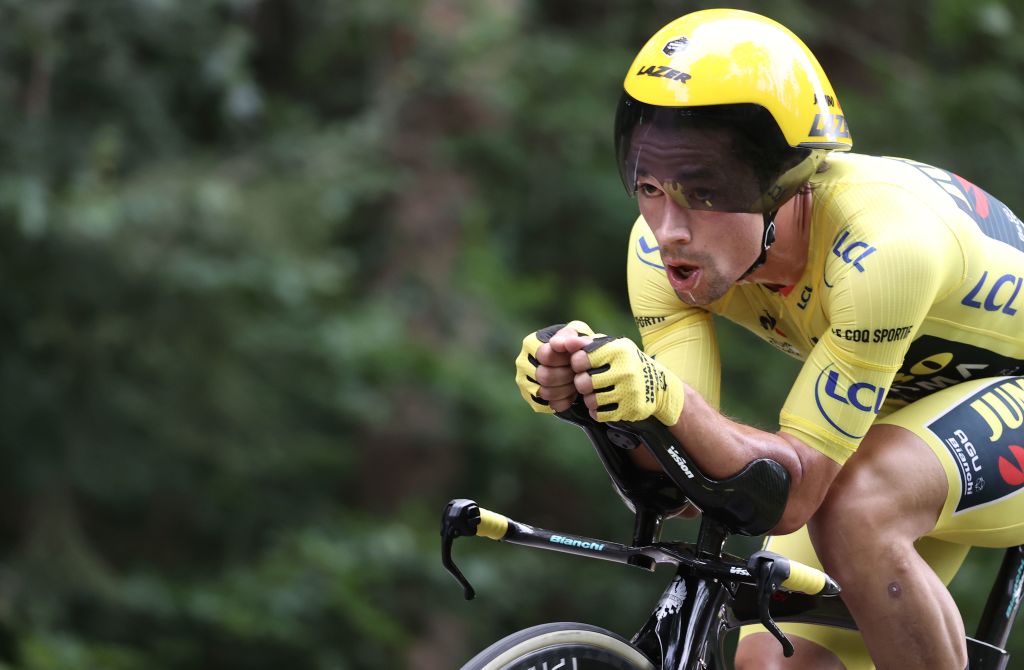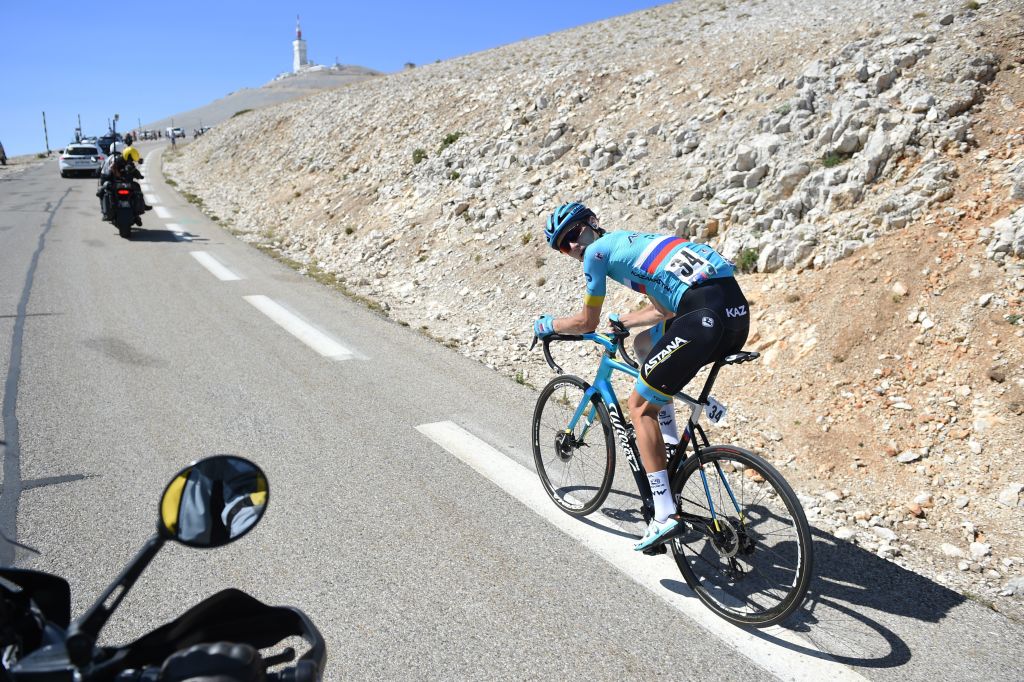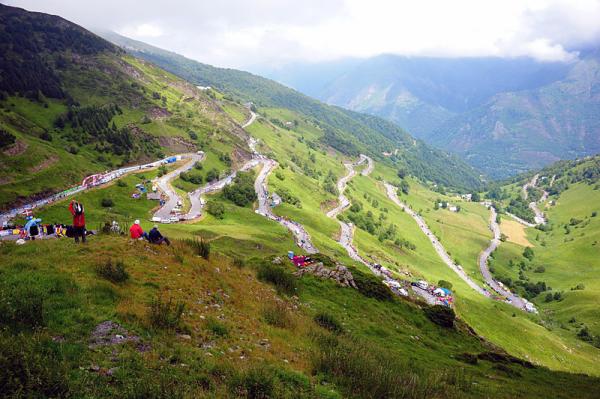Tour de France 2021 route: All the rumours ahead of the big reveal
Reports suggest Ventoux, plenty of Pyrenees, and increase in time trialling

The postponement of the 2021 Tour de France presentation - originally set for Thursday in Paris’ Palais des Congrès but now limited to a television appearance from race director Christian Prudhomme on Sunday - has given the route rumours three more days to swirl.
Organisers ASO always keep the route for the following year’s edition under wraps but details invariably emerge, with velowire.com gathering information and local media reports from the length and breadth of France, cross-checking hotel reservations and squeezing hints out of excitable mayors.
Despite the announcement creeping up in the aftermath of the Giro d’Italia and with the Vuelta a España in full swing, this year is no different, and a solid outline of the route can already be traced. As ever, Thomas Vergouwen at the Velowire website has led the way in sifting through all the information to piece together a possible parcours that, going by previous years, won't be too far wide of the mark.
At the moment, the broad outlines of the 2021 route so far indicate a significant increase in time trialling, a visit to the high Alps at the end of the first week, a return to Mont Ventoux, and a double helping of Pyrenean climbing either side of the second rest day.
Grand Départ
The 2021 Tour de France will start in Brittany on June 26, a week earlier than usual, due to the Olympic Games, which were pushed back to 2021 and will begin in Tokyo on July 23. The reshuffle of the international sporting calendar has already altered the route for the 108th edition of the Tour, which was originally set to start in Copenhagen until the Danish capital declared it impossible to host the Tour as well as matches in football’s European Championships around the same time.
Instead, the Grand Départ has been handed to the Brittany region in the north west of France, with the race set to remain within the hexagon until Paris, barring a possible incursion into Andorra. While the Copenhagen stages would have been known by now, details of the Brittany Grand Départ have yet to be confirmed, beyond the fact that the first stage will start in Brest and the following three will remain in the region.
Prospects of Julian Alaphilippe donning the yellow jersey for a third year in a row are beginning to crystallise, with punchy finishes on the cards on stages 1 and 2. Le Télégramme claims to have full details of the opening four stages, with the opening day to finish in Landerneau on one of a number of short, steep roads in the area, which, close to the coast, will also carry the threat of crosswinds and echelons.
Get The Leadout Newsletter
The latest race content, interviews, features, reviews and expert buying guides, direct to your inbox!
The following day is said to finish on the Mûr de Bretagne, which has been dubbed the 'Alpe d’Huez of Brittany'. The 2km climb, which has an average gradient of 6.9 per cent, was used in 2011, 2015, and 2018, with Cadel Evans, Alexis Vuillermoz, and Dan Martin the winners.
Le Télégramme reports the race will continue with two stages that start near the Atlantic coast before heading inland, first from Lorient to Pontivy, then from Redon to Fougères. Sprinters would likely have opportunities there.
Early time trial and Alps

The race will leave Brittany on stage 5, and there are growing rumours of a long time trial. The president of the Mayenne department has confirmed a stage will finish there, specifically at Laval, while France Bleu previously reported a team time trial but earlier this month changed that to an individual chrono "of around 50 kilometres". If true, it would be the longest time trial since 2014 and, likely to take place on flat or rolling roads, a hugely influential part of the overall battle in a race that has shied away from individual time trialling in recent years.
Details of the following stages are less clear but Velowire suggests the race will cut a sharp diagonal line all the way down to the Alps, in the south east, in the space of just two days. Stage finishes in Châteauroux and Le Creusot have been reported in local papers, with plenty of undulating terrain in the area to keep the sprinters guessing.
The mountains are set to begin at the end of the first week, with Le Progrès reporting that stage 8 will start in Oyonnax, on the edge of the Jura mountains, and head to the ski resort of Le Grand Bornand, where Alaphilippe won in 2018. Finishes in Le Grand Bornand often follow descents, with the Col de la Colombière, Col de la Croix Fry and the Montée de Glières – with its gravel section used again this year – all in close proximity.
Details of Sunday’s stage are scarce but many predict a return to Tignes after the summit finish there on stage 19 of the 2019 Tour was abruptly scrapped due to landslides. If coming from Le Grand Bornand, the stage wouldn’t take in the mighty Col de l’Iseran used last year but would instead approach along a longer valley road from the north before tackling the 7.4km, 7 per cent climb to Tignes at 2100 metres.
Ventoux and Andorra in week 2?

The second week looks set to head over to the Pyrenees, via the legendary Mont Ventoux. The 'Giant of Provence' hasn’t been used since Chris Froome ran up it in 2016, but work is underway to create a 'natural park' around the mountain, and the mayor of the area was invited to the planned route presentation.
Ventoux has mostly been used as a summit finish but France Bleu reports this stage would finish down at Malaucène after the riders have ascended the traditional way up from Bedoin.
Velowire has Ventoux as stage 11, following a stage to Valence to kick off the second week, and followed by another flat stage to Nîmes. A possible finish in Carcassonne would bring the race to the lesser-used eastern Pyrenees for the second weekend.
France Blue believes stage 14 will finish in Quillan, just shy of the high mountains, while the following stage could head up into Andorra. Newspapers in the principality have widely reported a seventh visit of the Tour de France, although reports of the finish – whether a summit finish on the Port d’Envalira (2400m) or down in one of the villages – remain conflicting.
More Pyrenees and final time trial

The Pyrenean action may not be reduced to that weekend. After the second rest day, stage 16 should take the race over to the Hautes-Pyrénees for a pair of marquee summit finishes that have already been confidently reported.
According to La Dépêche, the first, on Bastille Day on July 14, will be on the Col de Portet – 17.8km long at 7.9 per cent – followed by the ski resort of Luz Ardiden – 13km at 7.6 per cent – on stage 18. The Portet was last used in 2018, when Nairo Quintana won the stage and Geraint Thomas extended his overall lead, while the Tour has finished at Luz Ardiden on eight occasions, playing host to some memorable moments, including Lance Armstrong coming back from a spectator-caused crash to win in 2003.
Reports then suggest the race will head north on what will surely be a flat transition stage 18 to separate the mountains from the final GC battle ground, which is set to come in the form of a second time trial. Sud Ouest has the penultimate stage as an individual time trial from Libourne to Saint-Emilion, meaning a possible repeat of the final-day drama that saw Tadej Pogačar snatch yellow from Primož Roglič on the Planche des Belles Filles this year. Libroune and Saint-Emilion are less than 10km apart but it remains to be seen what sort of length and terrain this stage would entail.
The race would then transfer north to the outskirts of Paris for the traditional final-day procession into the French capital, followed by the laps of the Champs-Elysées and the final hurrah for the sprinters.
Patrick is a freelance sports writer and editor. He’s an NCTJ-accredited journalist with a bachelor’s degree in modern languages (French and Spanish). Patrick worked full-time at Cyclingnews for eight years between 2015 and 2023, latterly as Deputy Editor.
